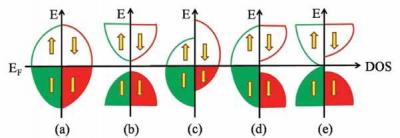
Magnetic alloys consisting of transition elements, especially the ones known as Heusler alloys are in the limelight because of the multifunctional properties they exhibit. These include ferromagnetic shape memory effect, giant magnetocaloric effect (MCE), giant exchange bias (EB), large anomalous Hall effect and half metallic ferromagnetism (HMF). These properties have the potential that can be exploited for applications such as magnetic sensors, magnetic refrigeration, magnetic recording and spintronics.We investigate a large number of multifunctional Heusler alloys by studying their structure-property correlations. These investigations have shown that some of these materials exhibit giant EB and/or MCE. This helps us in identifying novel and potential materials for different applications.While the properties such as MCE and EB arise due to the magneto- structural transition in these alloys, the peculiar electronic band structure gives rise to HMF behavior. Electron spin plays an important role in determining the magnetic and transport properties of HMF materials. By manipulating the spin, the conventional electronics gets new attributes, which resulted in the birth of spintronics. HMF materials play a crucial role in spintronic devices. In our laboratory, we have prepared many novel HMF materials, which appear to be promising for applications. During the course of these investigations, we could also identify a few materials that belong to a special class of HMF materials known as spin gapless semiconductors (SGS). The figure shows the differences in the electronic band structure of different classes of materials. The highlight of our work on HMF/SGS is the complete experimental characterisation supported by detailed band structure calculations.
Prof. K G Suresh
